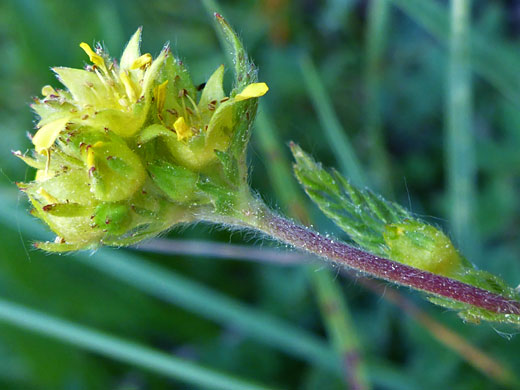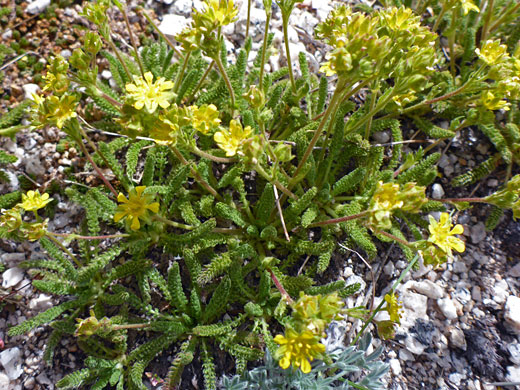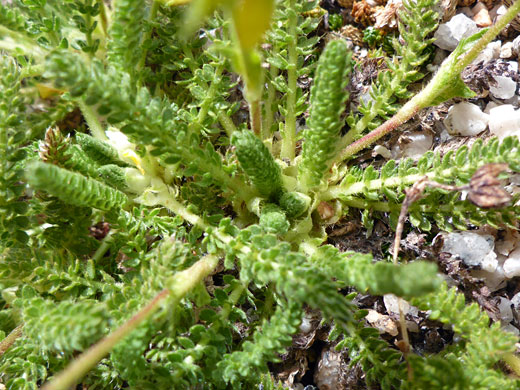Common name:
Field mousetail
Family:
Scientific name:
Ivesia campestris
Main flower color:
Range:
The southern Sierra Nevada, California
Height:
Up to 10 inches
Habitat:
Mountain meadows, from 7,000 to 10,000 feet
Leaves:
Up to 6 inches long, cylindrical in outline; divided into tiny, lobed leaflets
Season:
July to September
Ivesia campestris is found only across a 70 mile band in the southern Sierra Nevada, south of the Kings River. Leaves are mostly basal, and upwards-pointing; these are divided into up to 40 alternate, closely-spaced, lobed leaflets, angled in all directions. Plants also have three or four stem leaves, with fewer, unlobed leaflets. Leaves, stems, pedicels and sepals have a covering of white hairs.
Flowers are arranged in open, head-shaped clusters, one or several per stem. Flowers are around a third of an inch in diameter, with four clawed, obovate yellow petals and four triangular, light green sepals; occasionally there are five of each. The petals are slightly longer than the sepals. At the center is a cluster of between four and 20 small green carpels, ringed by up to 16 yellow stamens.
Flowers are arranged in open, head-shaped clusters, one or several per stem. Flowers are around a third of an inch in diameter, with four clawed, obovate yellow petals and four triangular, light green sepals; occasionally there are five of each. The petals are slightly longer than the sepals. At the center is a cluster of between four and 20 small green carpels, ringed by up to 16 yellow stamens.
All Contents © Copyright The American Southwest | Comments and Questions | Contribute | Site Map







